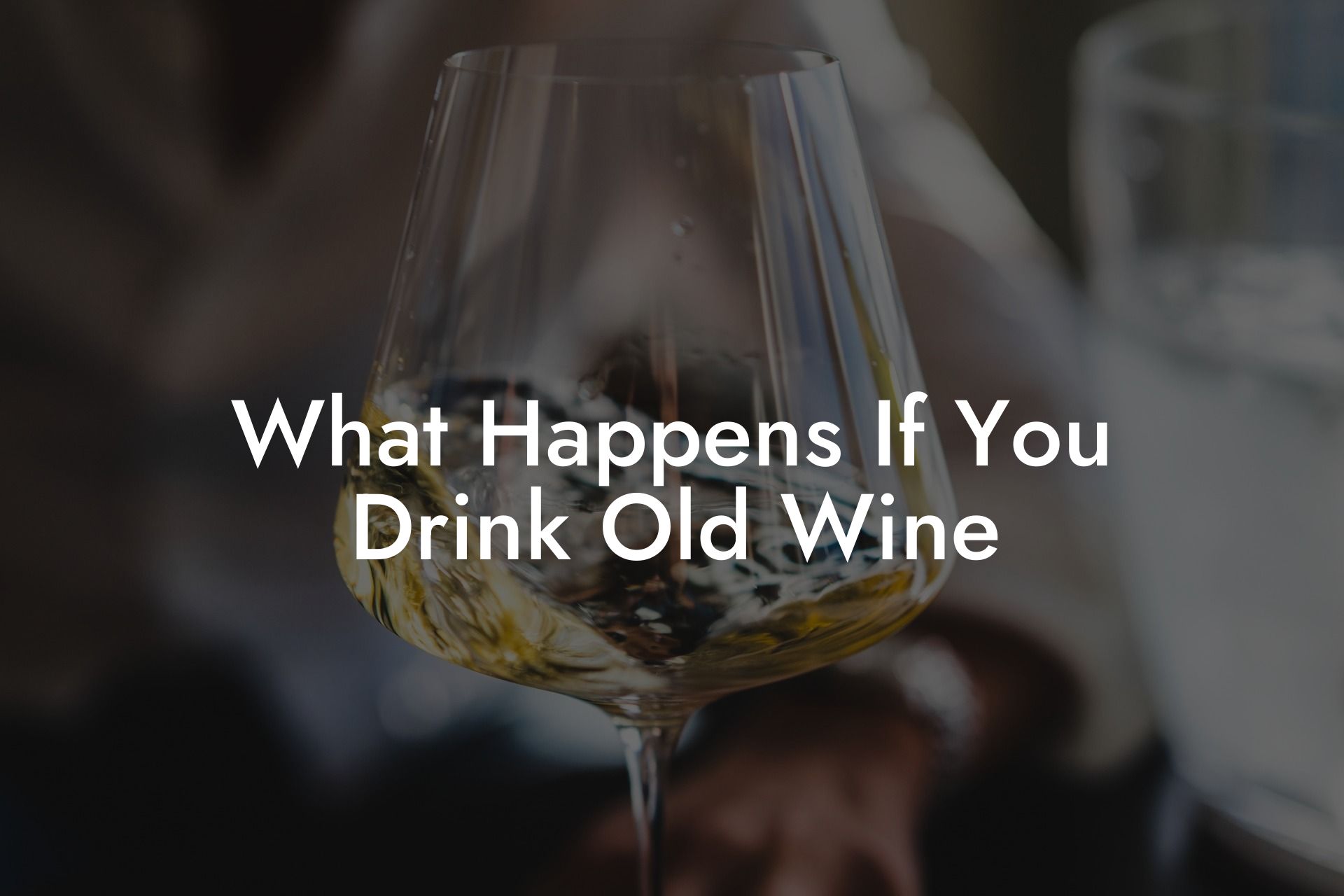Everybody has a bottle of old wine tucked away somewhere, but what happens if you decide to pop that cork and take a sip? Welcome to the Black Wine Club, where we explore everything about wine and offer some insights for all the wine enthusiasts and beginners alike! In this article, we discuss the various aspects of old wine, its potential effects, and how to determine if it's still worth drinking. So, let’s dive in and find out if that vintage bottle of yours is worth savoring or better left forgotten.
What Happens If You Drink Old Wine Table of Contents
What Does "Old Wine" Mean?
When we talk about old wine, we generally refer to a bottle that has been aging for an extended period. But not all wines are meant to be aged, and some might lose their delicious flavors and characteristics over time. Therefore, it's essential to understand the difference between good old wine that has aged gracefully and bad old wine that has spoiled.
Good Old Wine
- These are wines specifically crafted for aging
- Can improve in taste, aroma, and complexity over time
- Usually more expensive and rare
- Examples: Vintage ports, Bordeaux, Burgundy, and high-quality Cabernet Sauvignon
Bad Old Wine
- Wines not meant to be aged
- Can deteriorate in quality and taste
- Less expensive and more common
- Examples: Most white wines, basic table wines, and many red wines
What Can Happen When You Drink Old Wine?
Drinking old wine that has gone bad won't necessarily make you sick, but it can certainly lead to an unpleasant experience. Here are some potential effects of drinking old or spoiled wine:
Do You Want to Win a Free Bottle of Wine?
Don't miss out on the opportunity to win a free bottle of wine every week.
Enter our weekly prize draw today!
Poor Taste and Aroma
Old wine that has gone bad may taste sour or vinegar-like, with an unpleasant smell. This could be due to chemical reactions, poor storage conditions, or the wine being past its prime.
Oxidation
Over time, wine can become oxidized – meaning it has been exposed to too much air. This can lead to a loss of flavor, color, and aroma, and the wine may taste flat or dull.
Sedimentation
Old wines are more likely to contain sediment, which can affect the taste and mouthfeel. This is especially true for unfiltered wines, as they are more likely to develop sediment over time.
How to Tell If Your Old Wine Is Still Drinkable
Before sipping that old wine, first assess its condition to determine if it's still good to drink. Here are a few tips on how to do that:
Check the Bottle
Inspect the bottle for any indications of damage, such as a broken seal, cracked glass, or signs of leakage.
Look at the Label
The label should provide information on the winery, vintage, and any aging recommendations. If your wine was not meant to be aged, it's more likely to have gone bad.
Examine the Color
Color can provide some hints to the wine's condition. White wines tend to darken over time, while red wines may lose color or turn brownish.
Smell the Wine
Spoiled wine may have an off-putting aroma that resembles vinegar, mold, or damp cardboard. Trust your nose – if it doesn't smell good, it probably won't taste good either.
What Happens If You Drink Old Wine Example:
Let's say you've found a bottle of 15-year-old Cabernet Sauvignon in your basement. Here's how you'd assess its drinkability:
1. Check the bottle - Look for any signs of leakage or damage. The cork should be intact and not pushed up or sunken.
2. Examine the label - Ensure the vintage and winery are reputable and that the wine was meant to age.
3. Observe the color - The red wine should still have a vibrant hue, possibly with some brick tones.
4. Smell the wine - Give it a good whiff after opening. It should have a pleasing aroma, possibly with matured notes like leather, tobacco, or dark fruit.
If everything checks out, go ahead and taste it! If not, it's better to spare your taste buds and opt for a different bottle.
That's our guide on what happens when you drink old wine! Remember, not all wines are meant to age, and it's essential to know the difference between a beautiful aged bottle and one that's past its prime. We hope you've enjoyed this exploration and that it helps you make an informed decision when reaching for that dusty bottle in your collection. Be sure to share this article with your fellow wine lovers, and don't hesitate to explore more guides on the Black Wine Club to continue your wine journey!
Do You Want to Win a Free Bottle of Wine?
Don't miss out on the opportunity to win a free bottle of wine every week.
Enter our weekly prize draw today!












